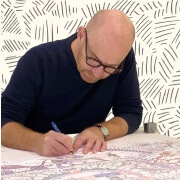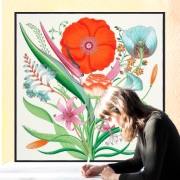To identify the first drawing at Hermès, we must look back to our very first objet: the harness. This set of leather straps is both a technical and aesthetic marvel, designed to highlight the captivating strength, gait, and athletic motion of the horse. Many scientific drawings have attempted to capture the horse’s skeletal and muscular anatomy. How can we control a horse’s strength without stifling its spirit? How can we preserve its panache while also containing it? This is the paradox of the harness.
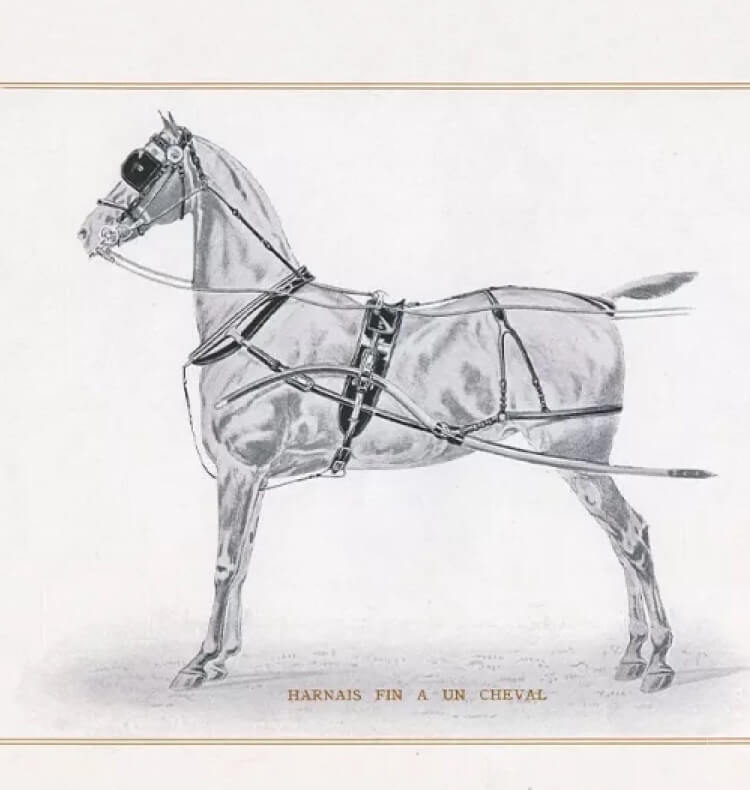
Drawing the harness
The harness: The first drawing at Hermès
The 19th century saw the emergence of a new relationship to the horse and a desire for lighter, more comfortable carriages. The genius of the Hermès harness maker meant that the small horses and large ponies trained to draw coaches could be styled as purebreds. A bespoke harness enhances the horse’s natural beauty: the crupper amplifies the tail’s panache, while the reins—run through the collar—straighten the horse’s neck. It could be said that the Hermès harness was a design piece ahead of its time, marrying ergonomics and aesthetics.
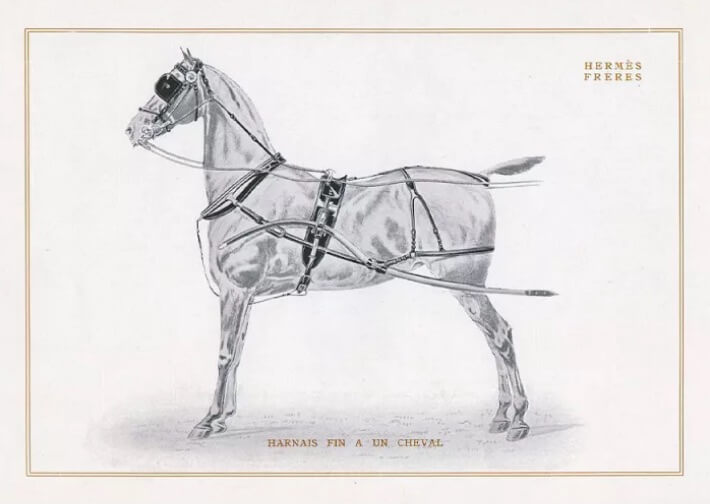
From a 1912 Hermès Frères product catalogue
Though the original Hermès harness is no longer available in stores, drawings of the harness continue to inspire the maison’s creations and are endlessly reinterpreted. In recent years, harnesses have been given a new lease of life in the Grand Tralala scarf from 2021 and the Grand Apparat, a forever scarf released in 1962 and reissued recently in its original colour combination.
In this way, drawings of horses led to drawings of harnesses, which then became the heritage that shaped the maison’s craftmaking.
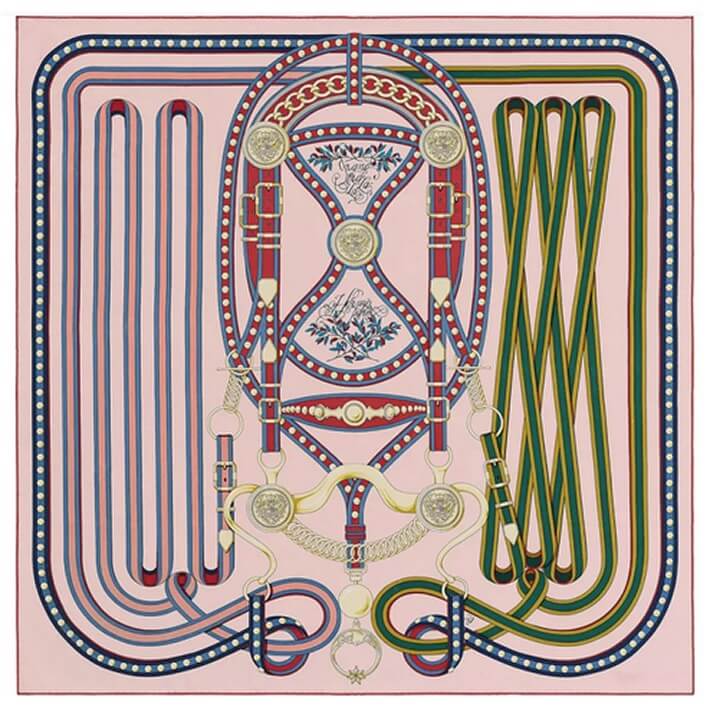
Grand Tralala scarf, designed by Virginie Jamin, 2021
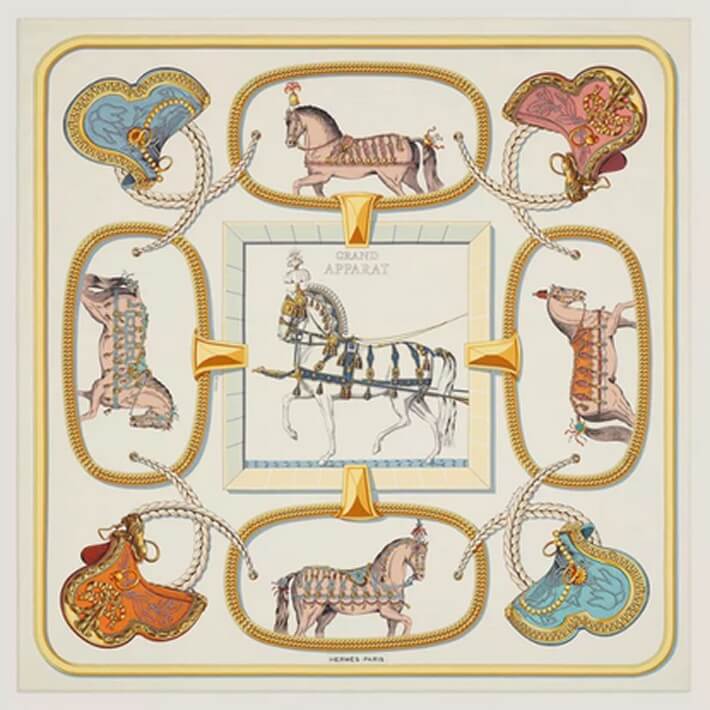
Grand Apparat forever scarf 90, designed by Jacques Eudel, 2023



